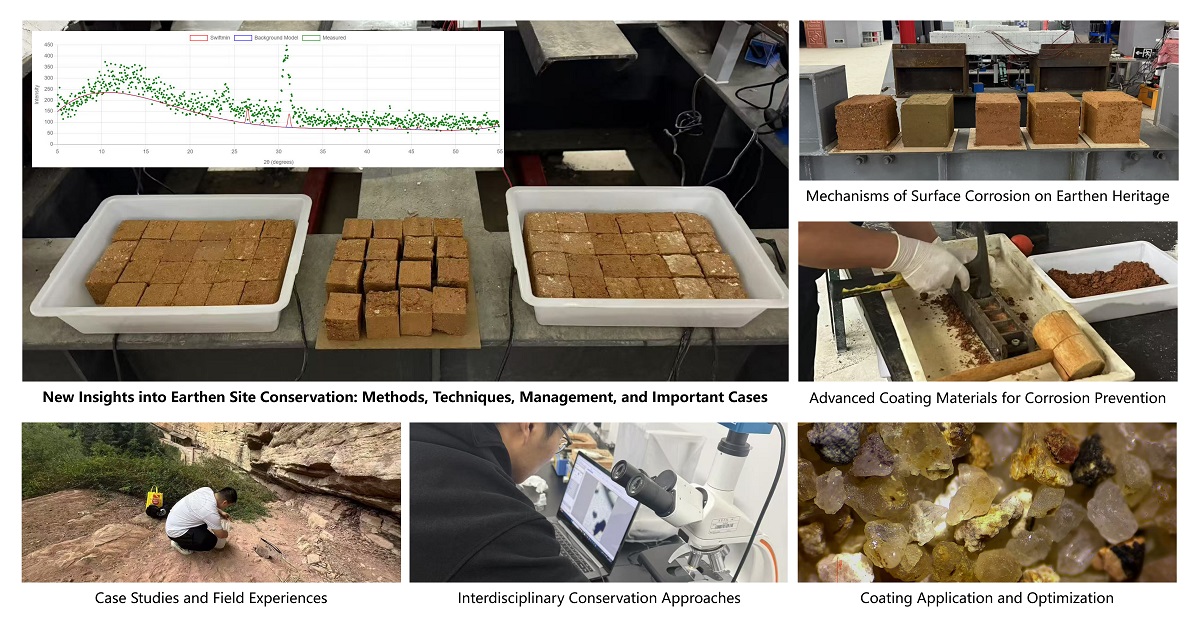New Insights into Earthen Site Conservation: Methods, Techniques, Management, and Key Case Studies
A special issue of Coatings (ISSN 2079-6412). This special issue belongs to the section "Surface Characterization, Deposition and Modification".
Deadline for manuscript submissions: 31 October 2025 | Viewed by 7464

Special Issue Editors
Interests: sustainable building design; integrated photovoltaics; energy conservation; microclimate; thermal comfort
Interests: urban design and renewal; Lingnan historical buildings; urban morphology; machine learning (CGAN and YOLO)
Special Issues, Collections and Topics in MDPI journals
Interests: application of AI in architecture; regional cultural architecture in china; sustainable building design for data centers
Special Issue Information
Dear Colleagues,
Earthen sites are ancient sites that hold significant historical, cultural, and scientific value, with earth serving as the primary building material. As places of great importance for civilization, earthen sites not only account for a large proportion of cultural heritage resources but also contain extremely rich historical information. They form an important basis for studying the origin and development of civilization and have great historical, scientific, and artistic value. Taking China as an example, earthen sites are distributed throughout the country; as of the confirmation of the sixth batch of national key cultural relic protection sites, there are about 400 earthen sites on this list, distributed over 30 provinces (municipalities and autonomous regions) across the country. Their construction technology includes adobe, rammed earth, cast earth, and other methods, and their construction methods mainly include raw earth excavation, silt ramming, adobe masonry, wet earth, and mud pile construction. These sites include ancient cities (such as the rammed-earth ancient city wall of Pingyao, Shanxi), the Great Wall, passes, beacons, earth towers (such as the Yumen Pass earthen site), tombs (such as the Western Xia royal tombs), earth pits, earth caves, earth kilns, earth cellars (such as the Qin Shihuang Terracotta Warriors and Horses Earth Pit), and rammed-earth buildings (such as the Hakka earth buildings in Fujian). The protection of earthen sites has developed into a multidisciplinary field combining physics, chemistry, archaeology, geology, humanities, and art. Relevant research fields encompass protection concepts, value interpretation, disease mechanisms, protection technologies, preventive protection, and the digitization of cultural relics. As a result, numerous excellent scientific research results have been obtained.
Therefore, this Special Issue will focus on important areas such as surface corrosion analysis, protection, and heritage management at earthen sites. Surface corrosion, caused by a complex interplay of environmental factors, microbial activity, and physical abrasion, can irreversibly damage the delicate fabric of earthen structures, eroding their historical and archaeological significance. Our aim is to publish a collection of high-quality research and practical insights that explore innovative solutions and conservation strategies.
The scope of this Special Issue includes, but is not limited to, the following topics:
- Advanced Coating Materials for Corrosion Prevention;
- Coating Application and Optimization;
- Interdisciplinary Conservation Approaches;
- Case Studies and Field Experiences.
We look forward to receiving your contributions.
Prof. Stephen S.Y. Lau
Dr. Yile Chen
Dr. Liang Zheng
Guest Editors
Dr. Jianyi Zheng
Guest Editor Assistant
Manuscript Submission Information
Manuscripts should be submitted online at www.mdpi.com by registering and logging in to this website. Once you are registered, click here to go to the submission form. Manuscripts can be submitted until the deadline. All submissions that pass pre-check are peer-reviewed. Accepted papers will be published continuously in the journal (as soon as accepted) and will be listed together on the special issue website. Research articles, review articles as well as short communications are invited. For planned papers, a title and short abstract (about 100 words) can be sent to the Editorial Office for announcement on this website.
Submitted manuscripts should not have been published previously, nor be under consideration for publication elsewhere (except conference proceedings papers). All manuscripts are thoroughly refereed through a single-blind peer-review process. A guide for authors and other relevant information for submission of manuscripts is available on the Instructions for Authors page. Coatings is an international peer-reviewed open access monthly journal published by MDPI.
Please visit the Instructions for Authors page before submitting a manuscript. The Article Processing Charge (APC) for publication in this open access journal is 2600 CHF (Swiss Francs). Submitted papers should be well formatted and use good English. Authors may use MDPI's English editing service prior to publication or during author revisions.
Keywords
- earthen site
- heritage science
- conservation
- architectural surface
- archaeological surface
Benefits of Publishing in a Special Issue
- Ease of navigation: Grouping papers by topic helps scholars navigate broad scope journals more efficiently.
- Greater discoverability: Special Issues support the reach and impact of scientific research. Articles in Special Issues are more discoverable and cited more frequently.
- Expansion of research network: Special Issues facilitate connections among authors, fostering scientific collaborations.
- External promotion: Articles in Special Issues are often promoted through the journal's social media, increasing their visibility.
- Reprint: MDPI Books provides the opportunity to republish successful Special Issues in book format, both online and in print.
Further information on MDPI's Special Issue policies can be found here.








